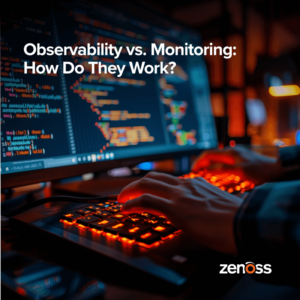In Part 1 of this blog series we discussed how some of the largest Zenoss customers were experiencing significant productivity gains from their adoption of Unified Monitoring. The second benefit that these enterprises highlighted was monitoring reach. Monitoring reach isn’t really a benefit that immediately comes to mind when you think of unified monitoring, but it is extremely valuable. As these IT leaders pointed out, moving to a unified monitoring platform gives you the ability to be make sure your monitoring is pervasive. The economies inherent in the platform allow you to reach areas of the network that were either too difficult to or too expensive to cover previously.
It is important to note that the customers who expressed the most excitement about the ability of unified monitoring to extend their monitoring reach were all formerly Big 4 (HP, IBM/Tivoli, CA, BMC) customers. These “megavendor” solutions are typically made up of a vast catalog of different products largely accumulated through acquisition. Each product addresses a separate class of resources, has a separate user interface, and is built on a separate code base, meaning that multiple products need to be integrated together to provide any level of monitoring coverage. The expense and complexity in deploying, integrating, and maintaining multiple products means that organizations may simply not be able to cover all of the resources – servers, network, storage, or applications – that they want to monitor.
One of our enterprise customers was actually able to expand monitoring coverage by nearly 300% by moving from a Big 4 solution to Zenoss Service Dynamics. The high licensing costs of the Big 4 solution limited how many resources they could afford to manage to just a few thousand devices. At the same time, their Big 4 application performance management solution was so complex and time consuming that deployment was limited to only the five most critical applications in the organization.
The cost and operational efficiencies of the Zenoss unified monitoring solution helped them to be much more pervasive in the monitoring they could provide to the organization. For the same amount that it used to cost them to manage ~3,800 devices, they were now able to monitor more than 15,000. They were also able to improve their application coverage by feeding the APM data from their complex tool into the Zenoss unified console. This allowed them to get the visibility they needed without the inefficiencies of wrestling with the APM console – meaning that they could move from monitoring only 5 key applications to more than 40 business critical apps.
Ideally, you want to extend monitoring to every corner of your network. The single code base, quick implementation, and centralized console of unified monitoring gives you an easy way to push out the boundaries of your monitoring. Not only is this going to give you better control over your environment, you’re going to see the benefits of the monitoring expansion almost immediately, helping boost your service delivery metrics.
For more information about how Zenoss compares to a Big 4 solution, you can read our What’s not so Cool about NetCool paper. Make sure to also read about the real-world IT productivity benefits of unified monitoring in our first blog in this series. Next up: faster incident resolution.








